Noroviruses are tiny particles that infect living organisms. Among the many types of viruses, norovirus is relatively well-known. This article aims to provide you with a better understanding of various aspects related to noroviruses. How do viruses affect the human body?
A virus has a simple structure consisting of genetic material and a protein capsid. It exhibits characteristics of both living organisms and inanimate matter. Variations in the protein capsid give viruses distinct shapes. Viruses can enter living cells and reproduce, but they require a host, such as a human or animal, to do so.
While there are naturally occurring viruses that can have positive effects on the body by strengthening the immune system or regenerating damaged tissues, most viruses are pathogenic, causing diseases that are common among humans. Viral infections spread quickly, making it relatively easy to become infected.
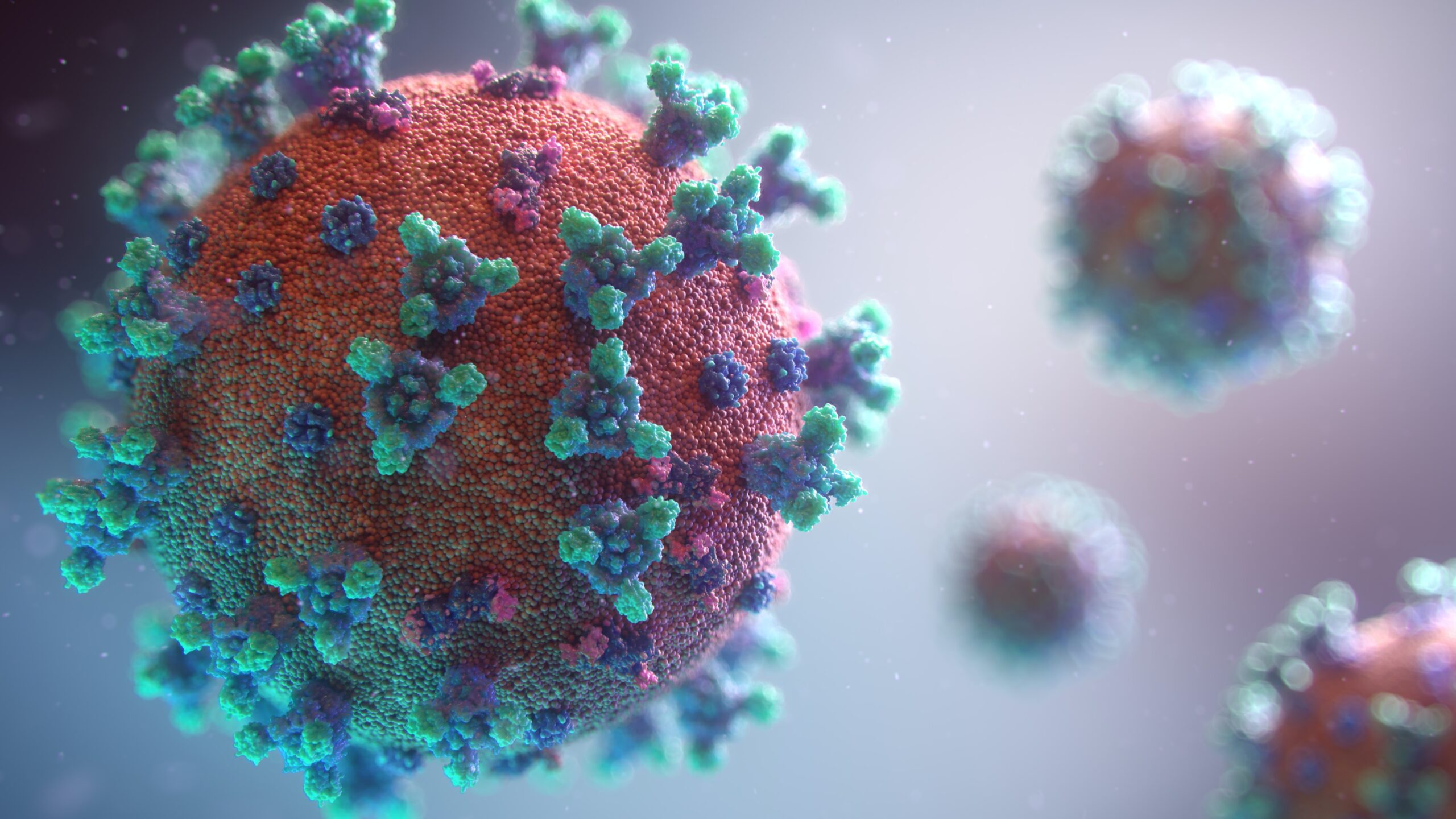
Noroviruses – also called Norwalk-like viruses, belong to the family Caliciviridae![]() . These tiny microorganisms have a spherical shape and lack an envelope and protrusions. Their virion is made up of a capsid containing a single RNA. Noroviruses are highly contagious and can withstand environmental conditions, including temperature variations and disinfectants. This resilience allows them to spread quickly.
. These tiny microorganisms have a spherical shape and lack an envelope and protrusions. Their virion is made up of a capsid containing a single RNA. Noroviruses are highly contagious and can withstand environmental conditions, including temperature variations and disinfectants. This resilience allows them to spread quickly.
The norovirus incubation period is short, contributing to its rapid transmission. Consequently, norovirus is a common culprit of foodborne illnesses globally, causing acute viral gastroenteritis. While infants are particularly vulnerable, older individuals and those with weakened immune systems are also at risk.
Infections can affect people of any age and pose a higher risk to specific groups. Infants, young children, immunocompromised individuals, and seniors are especially vulnerable to norovirus infection. Noroviruses are highly contagious and easily transmitted. Infection occurs through:
Norovirus is highly contagious, and even a tiny amount can cause infection. It spreads through direct contact with an infected person, such as sharing food or using the same utensils. Simple actions like shaking hands can also transmit the virus. In addition, touching surfaces or objects that are contaminated can lead to infection.
Consuming food that has been contaminated or coming into contact with contaminated water, such as in a swimming pool, are common ways to contract norovirus. It is important to note that noroviruses can survive outside a living host for up to 7 days![]() and are resistant to low-concentration chlorine disinfection and pasteurization.
and are resistant to low-concentration chlorine disinfection and pasteurization.

Some individuals are at a higher risk of contracting norovirus. This is particularly true for those with weakened immune systems, as they are more susceptible to various infections. Their bodies struggle to fight off harmful microorganisms that enter their system, making them more prone to developing the illness. Additionally, the following groups of people are also particularly vulnerable to norovirus infection:
People in frequent contact with strangers – Attending large groups and working in environments with a high number of people put individuals at risk of contracting infections like norovirus. This is because the close proximity and increased exposure to a more significant number of individuals increase the chances of transmission. Certain occupations, such as those in kindergartens or schools, can also pose a higher risk due to frequent contact with many people.
Medical personnel – Medical professionals are constantly at risk of contracting infections due to their direct contact with sick individuals. Being in medical facilities and care areas puts them at a higher risk of disease exposure.
Travelers – Travelers are at risk of infection due to frequent travel, being in public places (especially public transportation), and limited hygiene practices. It is widely recognized that travel increases the likelihood of acquiring various types of infections.
People in frequent contact with food – Frequent dining in restaurants increases the likelihood of norovirus infection. The higher number of individuals coming into contact with food and utensils in these establishments poses an increased risk. Additionally, those employed in food establishments are also at risk.
Noroviruses are the primary cause of acute gastroenteritis, commonly known as food poisoning. Symptoms typically appear one to two days after exposure to norovirus, although they can occur between 12 and 72 hours![]() . While most patients experience symptoms for 1 to 3 days, some cases can last longer. The onset of symptoms is usually sudden. Signs of a norovirus infection include:
. While most patients experience symptoms for 1 to 3 days, some cases can last longer. The onset of symptoms is usually sudden. Signs of a norovirus infection include:
Nausea and vomiting are common symptoms of norovirus infection, with noroviruses known to cause more intense and frequent vomiting compared to other viral gastroenteritis. Alongside vomiting, individuals may also experience diarrhea. This diarrhea is characterized by watery stools, ranging from large to moderate in size. Some people may also feel uncomfortable cramps in their abdomen. It's important to note that the severity and presentation of these symptoms can vary from case to case.
While some patients may only experience diarrhea, others may only vomit, and some may have both symptoms simultaneously. Still, others may solely encounter abdominal pain or nausea without vomiting. It's essential to be aware that vomiting or diarrhea associated with a viral infection can lead to dehydration, particularly in children, older adults, and individuals with underlying health conditions.
Fever and chills are rare additional symptoms that may occur. When someone is infected with norovirus, they typically experience a mild fever accompanied by chills. Additionally, they may feel muscle aches or headaches, which can contribute to an overall decrease in well-being.
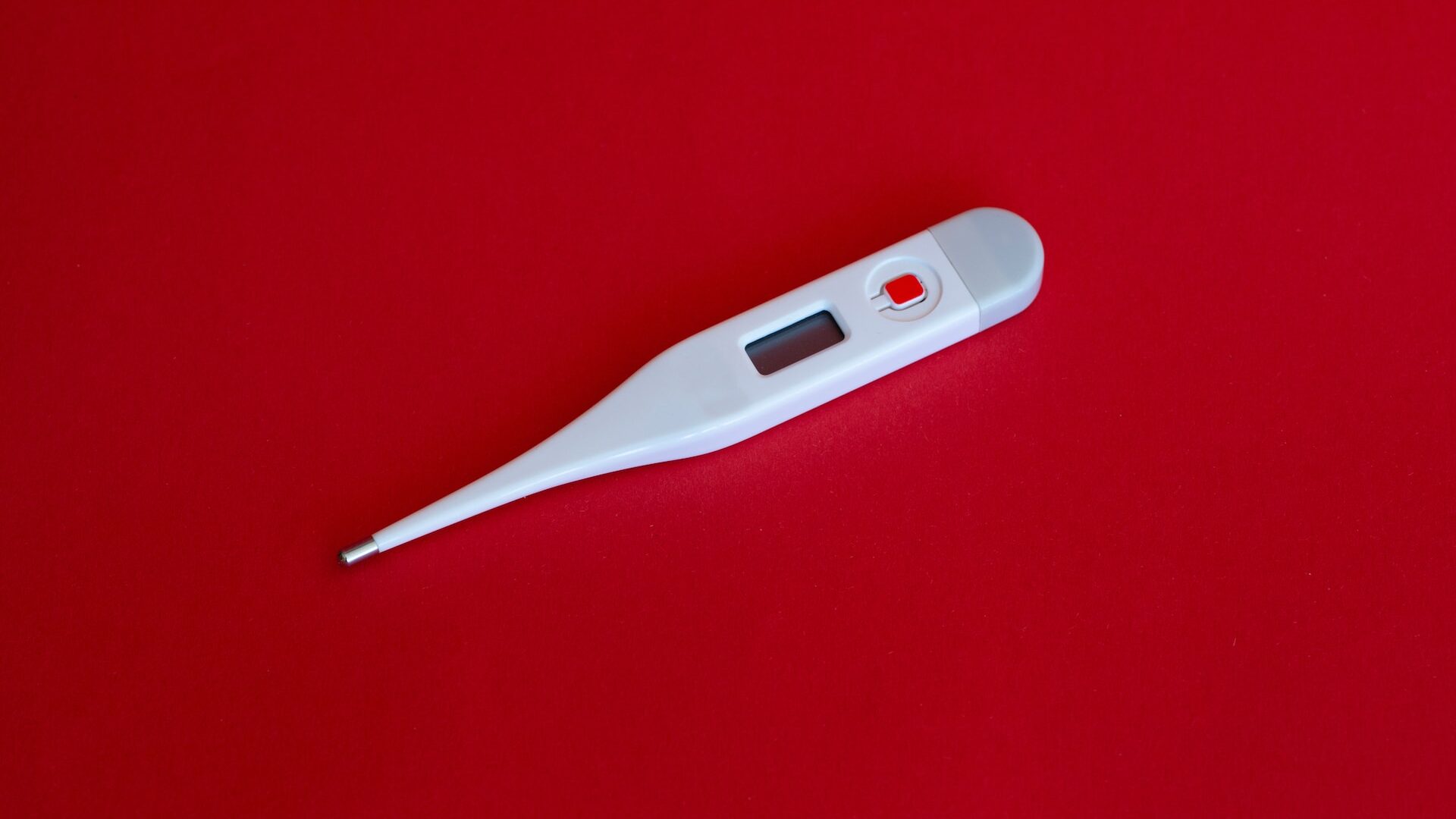
To diagnose norovirus, doctors gather a detailed patient history and conduct a thorough examination. They meticulously analyze symptoms like diarrhea, vomiting, and any other relevant signals. It's worth mentioning that norovirus infections can resemble other illnesses such as gastrointestinal infections caused by rotavirus. Therefore, determining the exact cause of the illness is not always straightforward.
When norovirus infection is suspected, diagnosing it involves testing a stool sample for the occurance of norovirus antigen![]() . The model should be collected during the acute phase of the disease. Although the virus can still be detected in a stool test after symptoms have subsided, there might be less present. In some cases, norovirus can still be found in stool samples even weeks after recovery, contributing to outbreaks of this type of virus. Water suspected to be contaminated can also undergo norovirus testing.
. The model should be collected during the acute phase of the disease. Although the virus can still be detected in a stool test after symptoms have subsided, there might be less present. In some cases, norovirus can still be found in stool samples even weeks after recovery, contributing to outbreaks of this type of virus. Water suspected to be contaminated can also undergo norovirus testing.
When diagnosing an illness, it's important to keep in mind that symptoms and complaints could be indicative of an infection caused by a virus other than norovirus. For instance, rotavirus infection![]() can produce similar symptoms. Rotavirus is part of the Reoviridae family and is recognized for its ability to survive in different environmental conditions. Symptoms of rotavirus infection include high fever, vomiting, and diarrhea, which can resemble a norovirus infection.
can produce similar symptoms. Rotavirus is part of the Reoviridae family and is recognized for its ability to survive in different environmental conditions. Symptoms of rotavirus infection include high fever, vomiting, and diarrhea, which can resemble a norovirus infection.
While rotaviruses primarily affects children, adults can also become infected. The transmission of rotavirus follows a similar pattern as the norovirus. Although rotavirus infection itself is not life-threatening, severe cases with symptoms like high fever, excessive vomiting, and prolonged diarrhea can lead to dehydration.
Although both viruses share similar symptoms, there are notable distinctions between them. Rotavirus infections primarily affect children and are uncommon in adults due to available vaccinations. In contrast, norovirus cannot be vaccinated against. Furthermore, norovirus infections often result in milder symptoms and fewer virus particles are required for infection than rotaviruses. Proper diagnostic tests make it possible to differentiate between noroviruses and rotaviruses.
For norovirus infection, there is no certain type of drug to cure the disease. Antibiotics are not effective in treating this virus. In some cases, medicines may be used to alleviate symptoms. However, most individuals recover from norovirus infection within 1-3 days without any medical intervention. Treatment mainly focuses on relieving symptoms and supporting the body in combating the virus. During norovirus infection, it is essential to:

Taking Care of Adequate Hydration – Staying hydrated is crucial, especially when dealing with norovirus infections. Symptoms such as diarrhea and vomiting can quickly lead to dehydration![]() . This becomes particularly dangerous for young children, posing a potentially life-threatening situation. To effectively combat dehydration during episodes of diarrhea, oral rehydration fluid can be administered.
. This becomes particularly dangerous for young children, posing a potentially life-threatening situation. To effectively combat dehydration during episodes of diarrhea, oral rehydration fluid can be administered.
Avoid Using Antidiarrheal and Antiemetic Drugs – It is not recommended to use antidiarrheal and antiemetic drugs unless the diarrhea is severe and persistent in adults. These medications can have potential side effects and harm children. Usually, the symptoms of the infection will subside within a few days, so it is advisable to let the illness run its course.
Stick to a Gentle Diet – When experiencing symptoms like diarrhea and vomiting, it's best to stick to a gentle diet that won't aggravate your symptoms. Avoid consuming fatty foods that can irritate the stomach. During the acute phase of the infection, many patients struggle with eating. In such cases, consuming easily manageable soups and liquid meals is recommended.
Norovirus infection is generally not severe and typically resolves within a few days. As such, complications are rare. However, it is essential to be aware of certain conditions that can increase the risk of health complications. Prolonged infection coupled with a weak immune system can elevate this risk. It's worth noting that most complications tend to occur in children, older adults, and individuals with underlying health conditions. Here are the following complications of norovirus infection:
Dehydration is the main warning when it comes to norovirus infection. This highly contagious virus can cause a disruption in fluid levels within the body, making dehydration a significant risk. If you become infected, you may experience symptoms such as vomiting and diarrhea, which can lead to dehydration.
Watch out for signs like decreased frequency of urination, dry mouth and throat, and dizziness. In severe cases, hospitalization![]() might be necessary for intravenous fluid administration to prevent dehydration. It's worth noting that dehydration can range from mild to severe, with the potential for serious complications in many cases.
might be necessary for intravenous fluid administration to prevent dehydration. It's worth noting that dehydration can range from mild to severe, with the potential for serious complications in many cases.
Cardiac arrhythmia is a condition that can occur as a result of severe dehydration caused by a norovirus infection. Dehydration leads to imbalances in electrolytes![]() and disrupts the body's acid-base balance, which can lead to cardiovascular failure. Cardiac arrhythmias involve abnormalities in heart rhythm, causing acceleration, deceleration, or irregular heart function.
and disrupts the body's acid-base balance, which can lead to cardiovascular failure. Cardiac arrhythmias involve abnormalities in heart rhythm, causing acceleration, deceleration, or irregular heart function.
While some arrhythmias may not cause noticeable symptoms, beatings are common. Shortness of breath and chest pain may also be experienced. In severe cases, unconsciousness and falls can occur due to heart muscle disorders. The consequences of cardiac arrhythmias include serious conditions like peripheral congestion, circulatory failure, and stroke.
Dehydration resulting from a prolonged norovirus infection can lead to kidney failure, a severe complication. Acute renal failure can occur due to urolithiasis or stones in the urinary tract. Ureteral stones happen when a stone moves from the kidney and blocks urine flow. This blockage causes severe pain known as renal colic.
If left untreated, these stones can ultimately lead to kidney failure, where the kidneys are no longer able to filter your the blood effectively. While this disease progresses slowly over time, it is treatable; in more advanced stages, a kidney transplant may be necessary.
Like anyone else, a pregnant woman can be susceptible to norovirus infection. It's common for pregnant women to experience stomach flu or gastroenteritis during pregnancy. These infections can bring intense and bothersome symptoms. Pregnant women commonly experience worry about the potential effects of their health on their unborn baby. It's essential to highlight that any digestive system inflammation during pregnancy carries a heightened risk. These include:
To mitigate these risks, it is crucial for pregnant women to prioritize preventing dehydration. Stomach flu, which manifests through symptoms such as vomiting and diarrhea, can lead to rapid loss of fluids. Therefore, the primary treatment for gastrointestinal infection involves replenishing fluids by drinking plenty. However, any medications should be supervised by a healthcare professional, as taking medications improperly can potentially harm the pregnancy.
The health of both the mother and baby is extremely important during pregnancy, so it's essential not to ignore any worrisome symptoms. Although stomach flu is usually a mild illness that can be treated with over-the-counter remedies, there are certain symptoms that require immediate medical attention. Pay particular attention to signs of dehydration and contact your doctor promptly if you notice them. The primary approach to treating enteritis in pregnant women focuses on ensuring hydration and allowing ample rest.
While it is not always possible to completely prevent norovirus, there are steps you can take to minimize your risk of the disease. Norovirus typically spreads through improper hygiene practices. To reduce your chances of getting infected, it is advised to follow these guidelines:
Frequent Hand Washing – Regular hand washing is essential for maintaining proper hygiene. It prevents the spread of infections. Bacteria and viruses can survive on our hands for up to 4 hours, so it is crucial to thoroughly wash and disinfect them. Noroviruses in particular do not have a protective outer layer, which makes them resistant![]() to mild cleaning agents. It is especially important to wash our hands before meals and avoid touching our faces with dirty hands.
to mild cleaning agents. It is especially important to wash our hands before meals and avoid touching our faces with dirty hands.
Food Safety Tips – To prevent norovirus infection, make sure to wash vegetables and fruits thoroughly before eating them. You can also heat treat them to ensure safety. Avoid consuming stale food left at warm temperatures for too long. These conditions can promote bacterial growth on meat or dairy products, even if they appear fine. It is important to be wary of questionable-quality food service establishments where employees may not adhere to proper hygiene practices. It is crucial to choose establishments that prioritize cleanliness and follow hygiene rules diligently.
Maintaining Clean Rooms – Keeping your rooms clean is essential to prevent infection. Pay special attention to areas like the kitchen, where meals are prepared. Maintaining cleanliness in the bathroom is crucial since it can be a breeding ground for bacteria. Focus on keeping sinks germ-free as they tend to accumulate microorganisms. To prevent norovirus and sanitize items like computer keyboards or phones, you can effectively use a solution of vinegar![]() mixed with water due to its high acidity.
mixed with water due to its high acidity.
Taking Care of Disinfection – Another effective method is using hydrogen peroxide for disinfection purposes. When frequently interacting with people, prioritizing disinfection becomes important. In situations where handwashing facilities may not be readily available at work, it's advisable to have specialized disinfectant solutions on hand. Additionally, individuals working in office spaces, daycares, or medical facilities should be particularly mindful of the increased risk of norovirus infections.

When we experience gastrointestinal infections, we often endure bothersome symptoms that make it challenging to maintain a healthy diet. Additionally, frequent bouts of diarrhea and vomiting lead to losing vital nutrients, which weakens our immune system. Given these circumstances, what should one consume while dealing with stomach flu? When you have a norovirus infection, follow the following dietary rules:
Stay Hydrated – Staying hydrated is crucial when dealing with a norovirus infection. It is especially important to consume plenty of fluids in the early days of illness. This can include water, weak infusions like tea and herbal drinks, and even milk.
Eat Easily Digestible Meals – During the initial stages of the illness, it may be challenging to eat solid meals. However, consistently taking in fluids is essential. When you are able to eat again, choose easily digestible meals. Opt for semi-liquid options like rice gruel and smoothies to prevent further energy loss. You can also incorporate easily digestible solid foods such as rusks or corn crisps into your diet. During your recovery, it's important to gradually incorporate nourishing and energizing meals into your diet.
Restore Intestinal Health – Prioritize easily digestible options that are low in fiber. In addition, probiotics![]() have been found to be effective in treating gastrointestinal flu and promoting intestinal health. They are often used after recovering from the illness to restore the balance of healthy bacteria in the gut. Probiotics can also help reduce the duration of diarrhea. Specific strains like Lactobacillus casei and Saccharomyces boulardii are recommended for intestinal flu as they alleviate symptoms. It is recommended to consult with a healthcare professional before initiating the use of probiotics.
have been found to be effective in treating gastrointestinal flu and promoting intestinal health. They are often used after recovering from the illness to restore the balance of healthy bacteria in the gut. Probiotics can also help reduce the duration of diarrhea. Specific strains like Lactobacillus casei and Saccharomyces boulardii are recommended for intestinal flu as they alleviate symptoms. It is recommended to consult with a healthcare professional before initiating the use of probiotics.
Noroviruses are particularly tough and can persist in various environmental conditions like temperature and disinfectants, making them highly transmissible. They are commonly responsible for foodborne infections and are prevalent worldwide. While infants are the most susceptible, people with weakened immune systems are at risk. Contracting norovirus requires only a small amount of infectious material, making contact with an infected person a potential source of infection.
Symptoms of norovirus infection primarily include nausea and vomiting, often more severe than with other cases of viral gastroenteritis. Diarrhea can also occur, so it's important to consider testing for norovirus antigen when diagnosing the illness. Keep in mind that unusual symptoms may indicate an infection caused by a different virus, such as rotavirus. Treatment for norovirus focuses on managing symptoms rather than using specific drugs or antibiotics.
The infection is typically not life-threatening and resolves within a few days, but dehydration can be a potential complication due to fluid loss from vomiting and diarrhea. In pregnant individuals, norovirus infection can cause intense symptoms and anxiety regarding fetal health because gastrointestinal inflammation carries higher risks during this time. While preventing norovirus completely may be challenging, practicing good hygiene can reduce the risk of contracting the disease.
Table of Contents
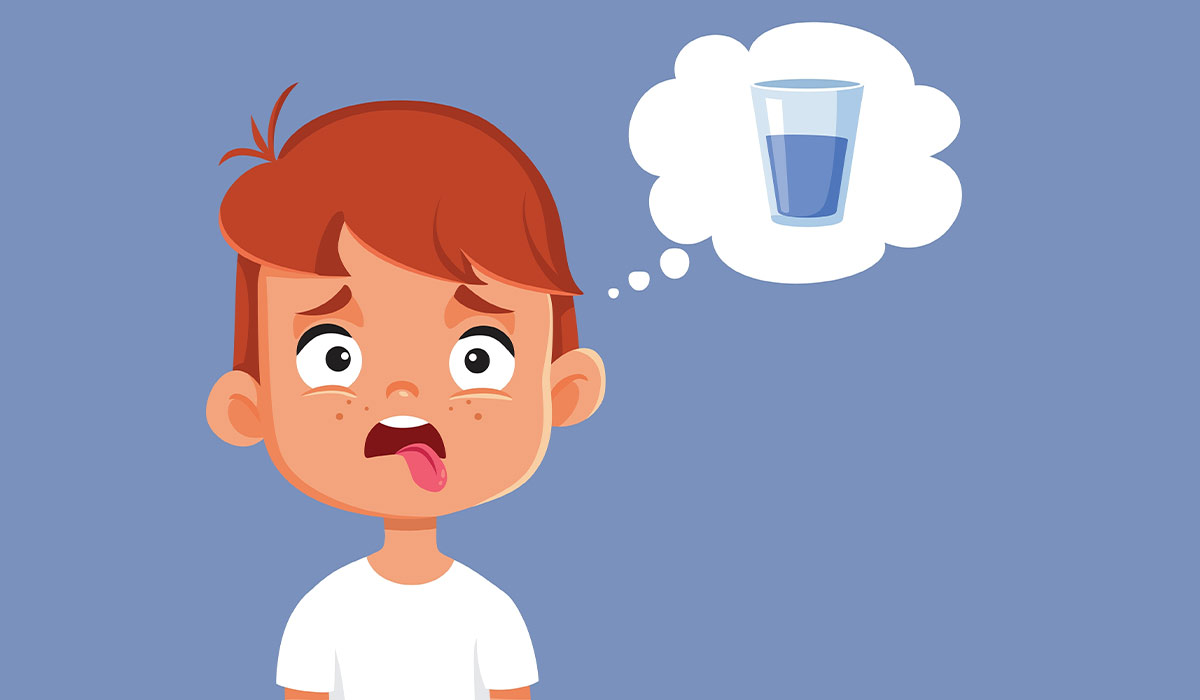
Dehydration can cause many negative health effects. It is a common problem in children and seniors. Learn how to recognize… read more »
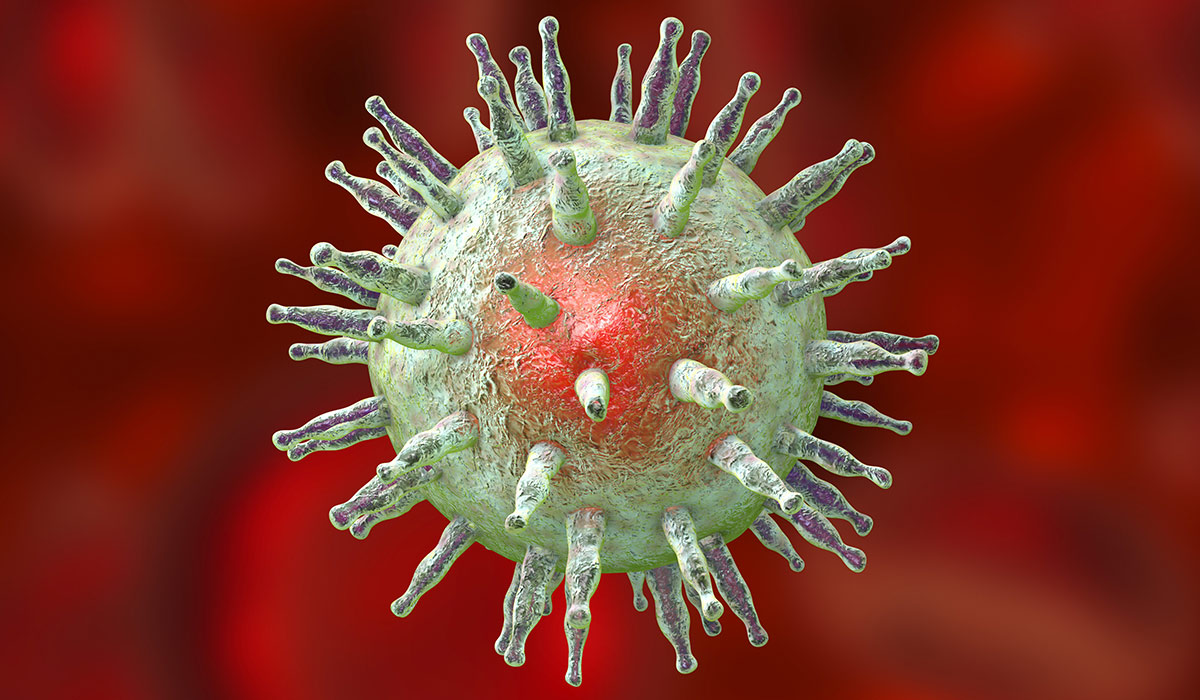
Epstein Barr Virus is a pathogen that causes infectious mononucleosis and many other diseases. Learn about the risks associated with… read more »

Diarrhea is usually a symptom of a gastrointestinal infection. It is characterized by excessive excretion of stool with a loose… read more »
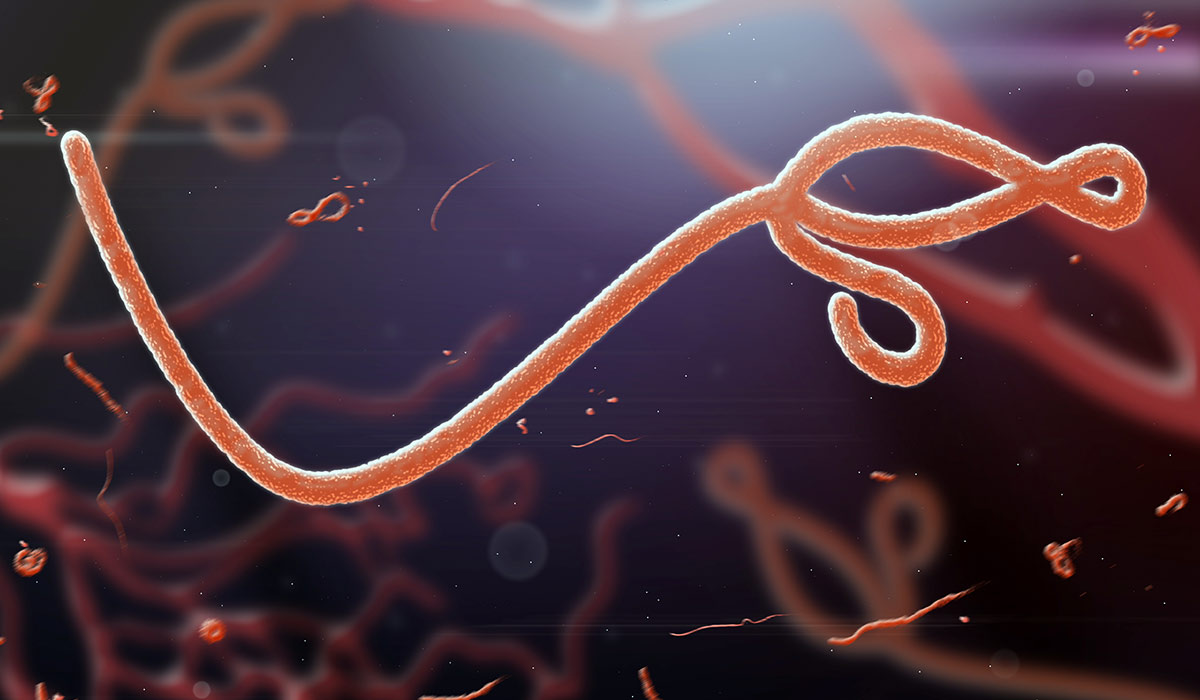
The Ebola virus continues to pose a threat to those living in Africa. Learn about the risks associated with Ebola… read more »
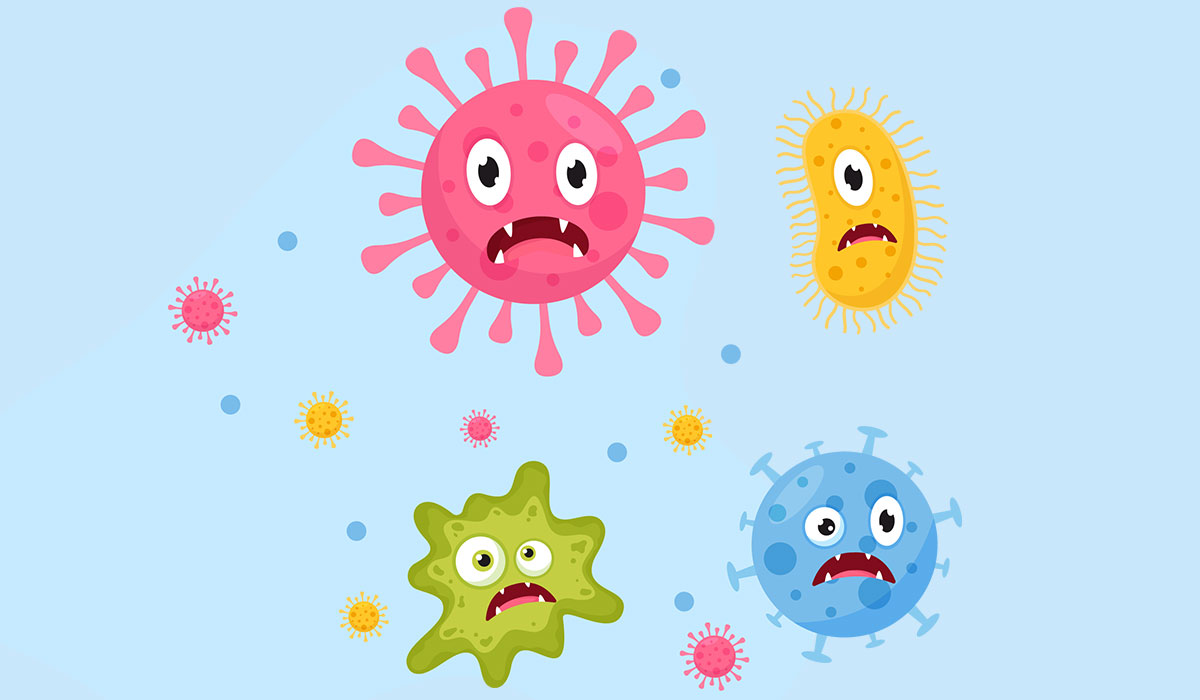
Viruses are microscopic infectious agents that can only replicate inside the living cells of a host organism. They are not… read more »
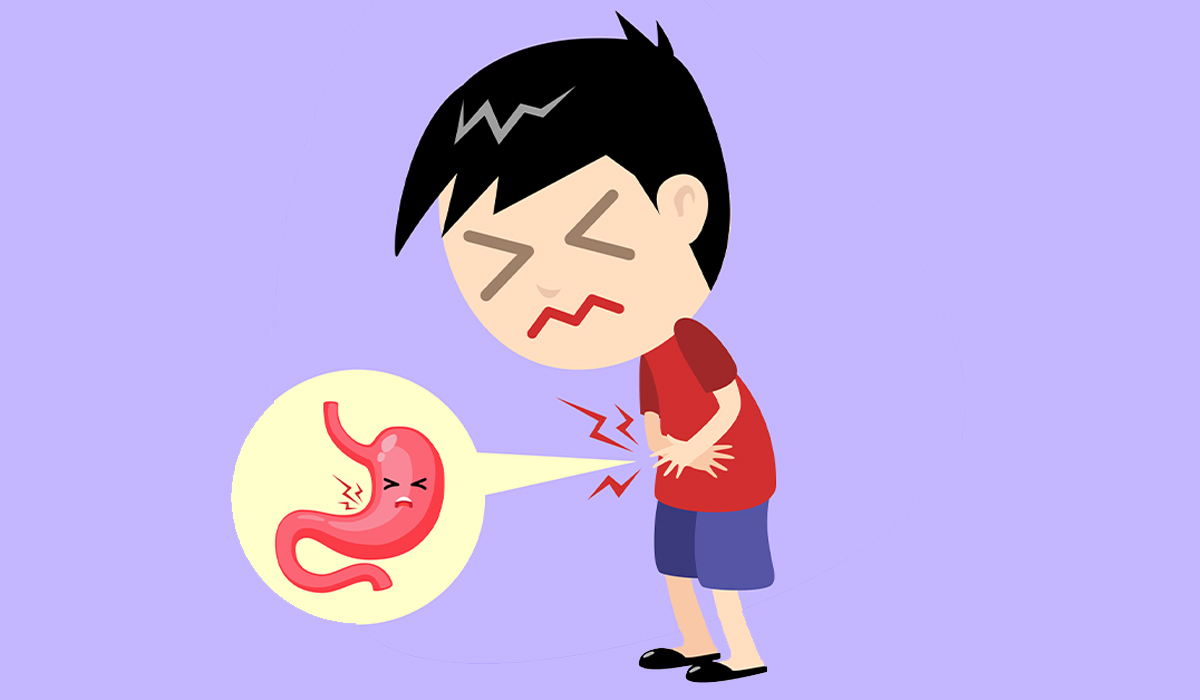
Gastroenteritis is a diarrheal disease. Viral infections are a common cause. How to recognize it? How is gastroenteritis treated? read more »
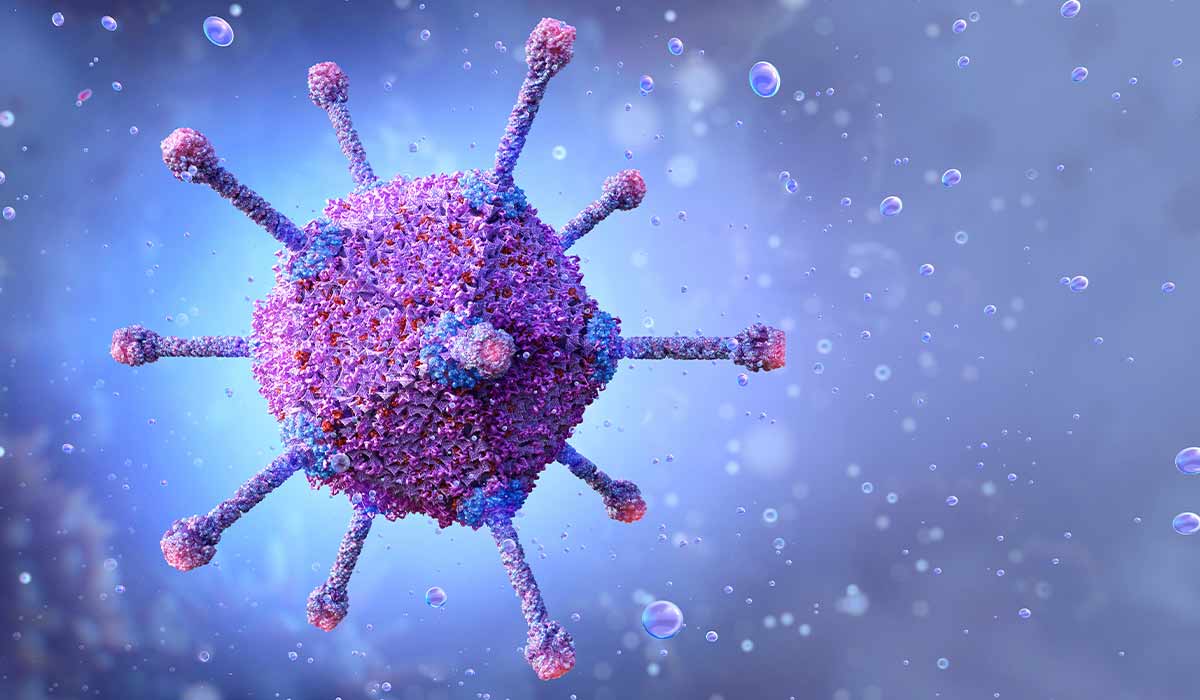
Adenovirus is a pathogen commonly found in the environment. Find out how to recognise adenoviral infections. Learn about treatment and… read more »
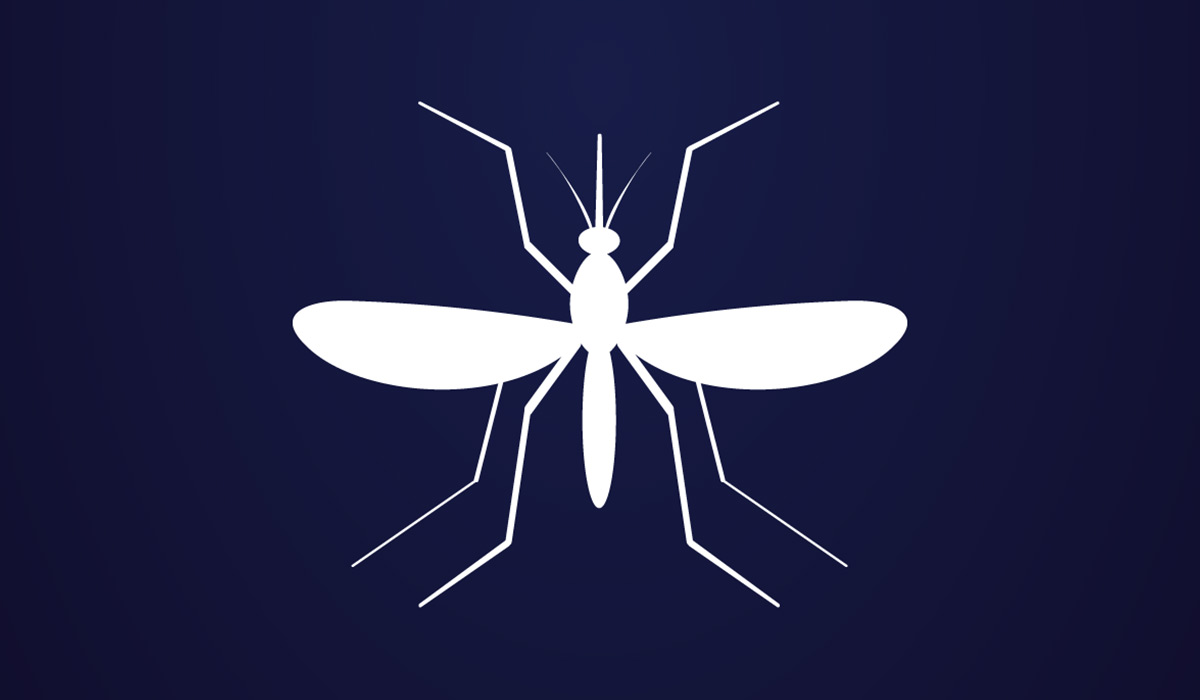
West Nile Virus is a threat not only to Africans. Fortunately, most patients pass the infection mildly, but there are… read more »

Herpes is a viral infectious disease that most often affects the lip area. Herpes virus infections are common. What does… read more »